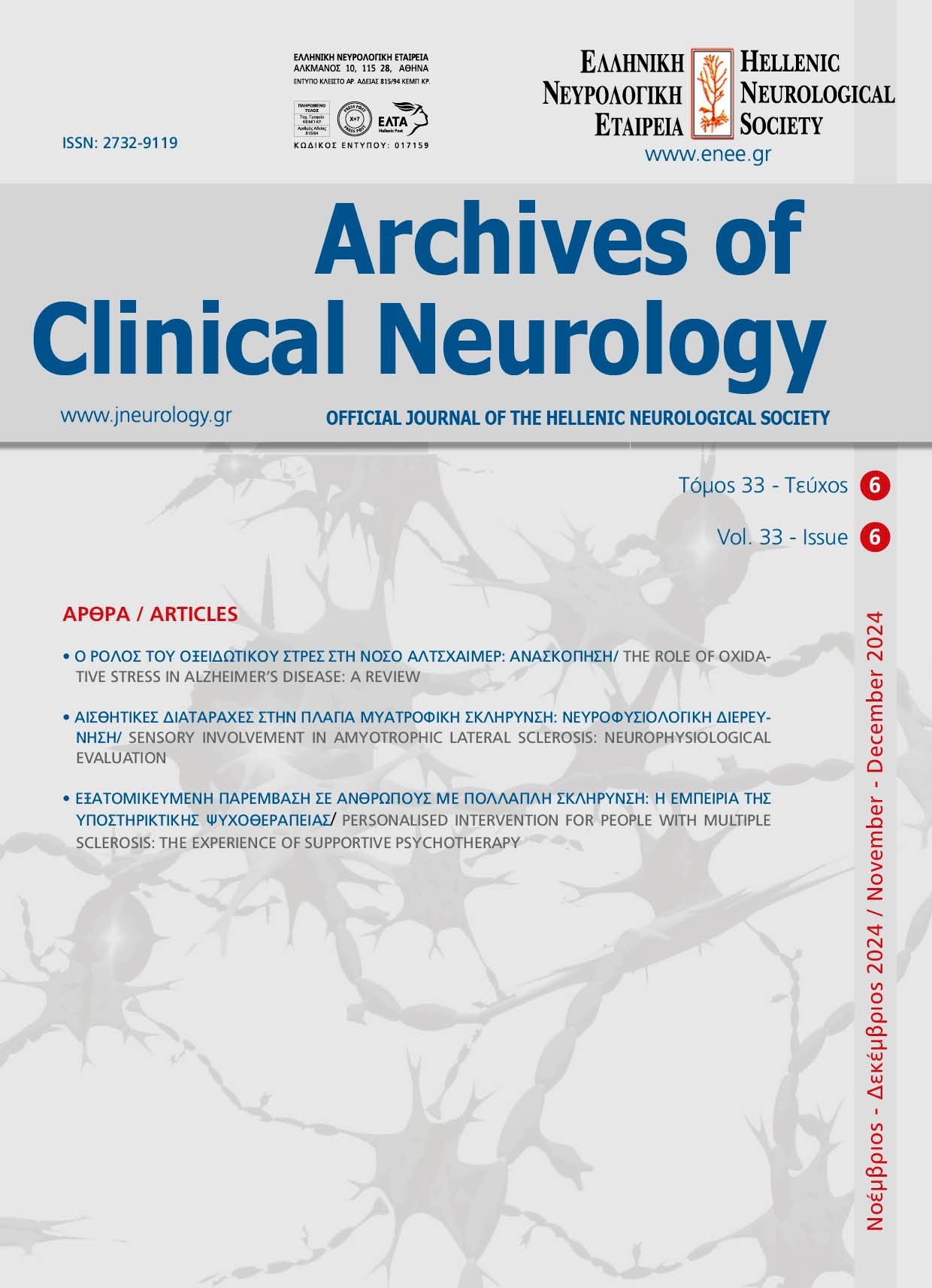SENSORY INVOLVEMENT IN AMYOTROPHIC LATERAL SCLEROSIS; NEUROPHYSIOLOGICAL EVALUATION
Keywords:
Amyotrophic Lateral Sclerosis; Sensory Impairment; Somatosensory Evoked Potentials; Sensory Conduction Studies; Sympathetic Skin ResponseAbstract
Abstract (96 words)
Amyotrophic lateral sclerosis (ALS) is a progressive neurodegenerative disorder considered as a “pure” motor disease affecting upper and lower motor neurons. In the course of the disease, some patients exhibit concomitant nonmotor signs, and thus ALS is now considered a multisystem disorder. Cognitive or behavioral impairment and extrapyramidal symptoms are common findings. Sensory impairment in ALS has long been debated and disputed. The aim of this review is to present the neurophysiological assessment (Somatosensory Evoked Potentials, Sensory Conduction Studies and Sympathetic Skin Response) of sensory involvement in ALS and to discuss potential pathogenic mechanisms underlying it.
Downloads
Published
2025-01-10
Issue
Section
Reviews


